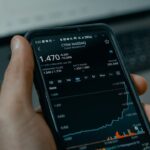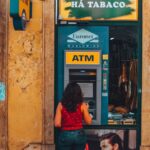Investing in LEGO sets has emerged as a surprising but formidable alternative asset class that offers the potential for financial gain. Often perceived as a mere childhood pastime, LEGO bricks have proven to hold considerable value in the secondary market. Investors have taken notice of this trend, seeking to capitalize on the profitability associated with rare or retired LEGO sets. Certain LEGO sets have historically appreciated in value over time, much like traditional investments, due in part to the strong brand loyalty and the finite production of sets.

- LEGO sets can be a profitable alternative investment, appreciated by both enthusiasts and investors.
- Knowledge of the LEGO marketplace and investment fundamentals is crucial for success.
- Strategic buying and selling on the secondary market is essential to maximizing investment returns.
Interest in LEGO investing has been fueled by statistical analysis and various market studies. These analyses not just reflect the current market value of LEGO sets but also make predictions on their future performance. By understanding the fundamentals of LEGO investing, such as the importance of condition, rarity, and market demand, investors are able to make more informed decisions. Finding success in the LEGO marketplace, however, requires more than just an appreciation for the toy; it demands a strategic approach to purchasing, holding, and selling to ensure the best return on investment.
Lego Investing Explained
Investing in Lego involves a strategic approach to purchasing, holding, and selling Lego sets for profit. The key to successful Lego investing lies in understanding market trends, evaluating the value of sets, and applying effective investment strategies.
The secondary market for Lego sets becomes relevant once a set is retired and no longer available through official retail channels. It is driven by demand from collectors and fans seeking rare or exclusive items. Rarity and exclusivity are significant factors, as sets limited in production or tied to popular themes often appreciate in value. Investors should closely monitor market indicators such as past performance and collectibility to anticipate future demand.
Valuing Lego Sets
When valuing Lego sets, factors such as condition and completeness are crucial. Sets in pristine, unopened condition typically fetch higher prices. Rarity, both in terms of the number of sets produced and their availability in the market, also affects value. Investors employ price-tracking tools to determine current valuations and predict potential annual returns. It’s important to account for the costs associated with storage and upkeep, as they can impact overall investment returns.
Investing Strategies
Investors should develop strategies based on their financial goals and risk tolerance. A common approach is to purchase sets before they retire, store them carefully, and sell them when demand increases and supply dwindles, ensuring a substantial annual return. Diversifying one’s portfolio by investing in a range of sets can mitigate risk. Lastly, staying informed about market trends and upcoming sets is crucial for making timely investment decisions.
By adhering to these fundamental principles, investors can navigate the intricate world of Lego investing with greater confidence and potential for profit.
Lego Marketplace
Investing in Lego sets can be as nuanced as trading in stocks, art, or real estate, with the marketplace offering a mix of challenges and opportunities. Successful navigation demands understanding the sets’ inherent value, strategies for selling, and staying apace with market trends.
Choosing the Right Sets
When buying Lego sets, investors look for products that are likely to increase in value. Limited-edition sets, those with historical returns, or exclusive releases are prime examples. It’s akin to investing in rare stamps or fine wine, where rarity and demand drive potential profit. Retired sets, especially from popular franchises such as Star Wars, Harry Potter, or Marvel, often command higher prices in the secondary market.
Selling and Diversification
An investor sells Lego sets either through private sales or public marketplaces. Diversification is key, which means spreading investments across different types of sets, comparable to distributing funds across shares, bonds, and gold to mitigate risks. Investors may consider parting with certain sets when they reach peak value, thereby maximizing returns.
Staying Informed
Keeping abreast of the latest trends and market dynamics is crucial for anyone interested in investing in Lego. The annual increase in the value of secondhand Lego sets can outpace traditional investments like gold or bonds. Regularly consulting community forums, following market analyses, and leveraging expert advice helps investors make informed decisions and enhance their buying and selling strategies.

